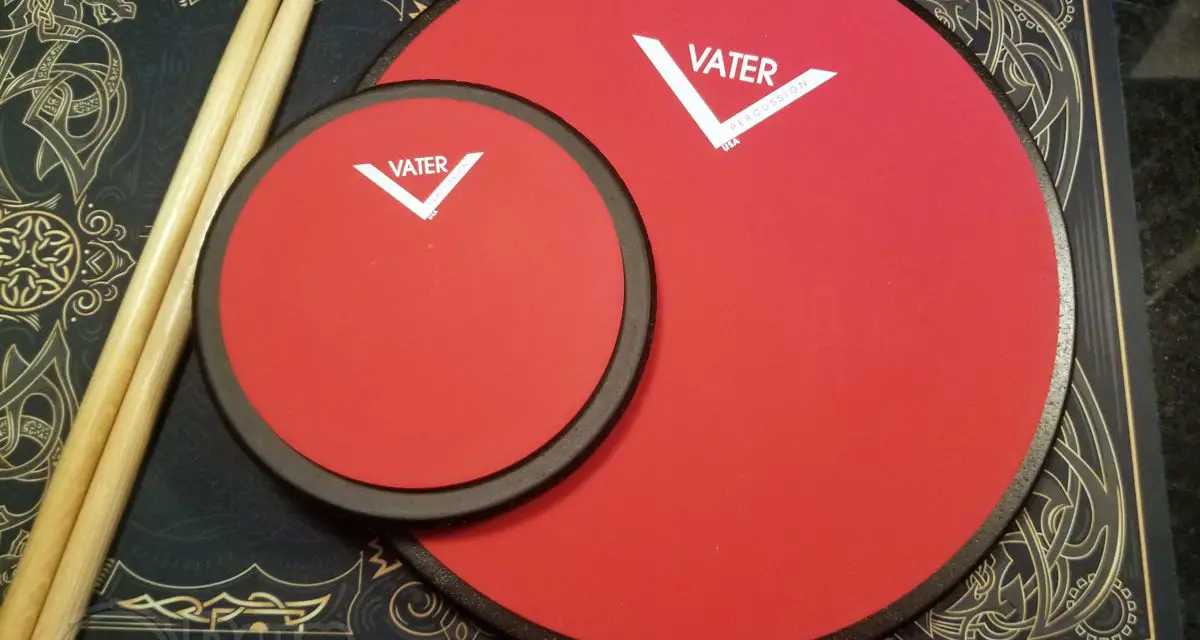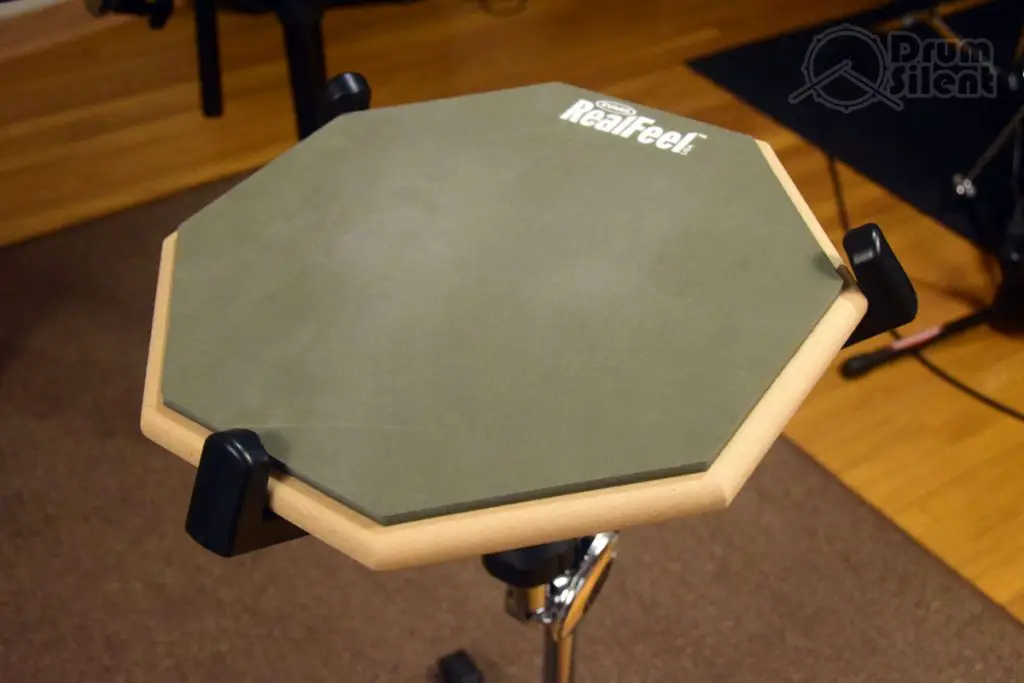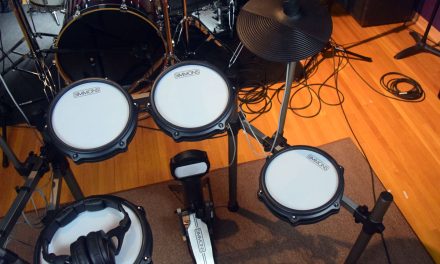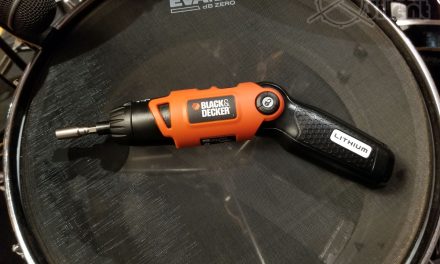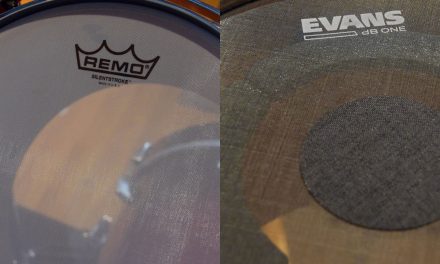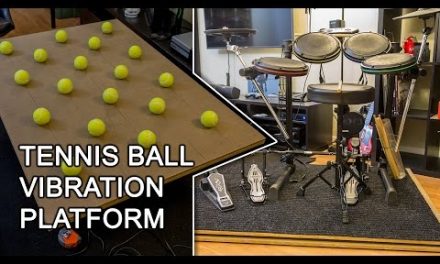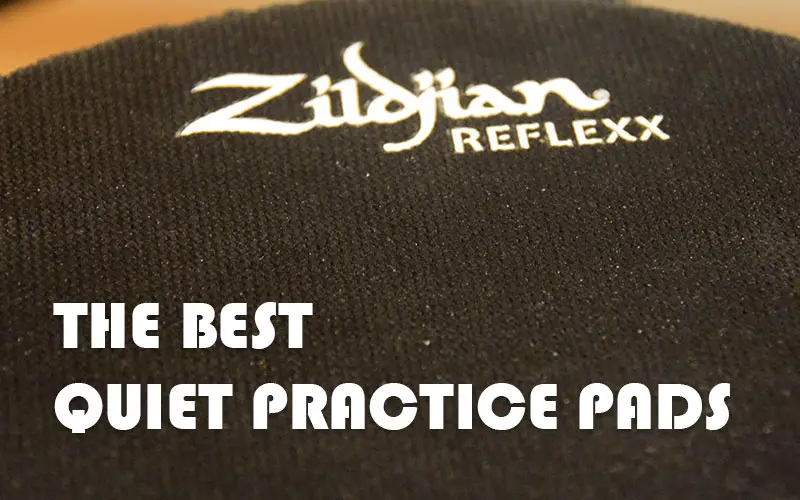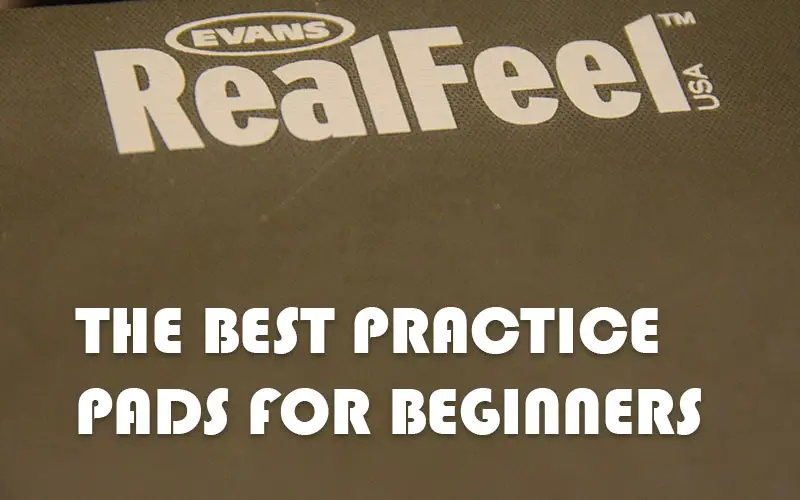Practice pads can be found in many sizes, ranging from around 6 inches in diameter to as large as 12 or 14 inches in diameter. There are some different advantages to using either a smaller or larger pad.
Smaller Practice Pads are More Portable
The biggest advantage of a smaller practice pad is portability. A 6 inch pad is super easy to haul around, will be more lightweight, and can fit easily in a backpack while still leaving plenty of space for everything else you’re lugging around in there. Even many of the 8-10 inch pads can feel more portable if you’re going to be carrying your pad with you frequently. If portability is a high priority, a smaller pad is probably going to be the way to go.
Smaller Practice Pads Require More Precision
The playing surface is smaller on a smaller practice pad, obviously, which reduces the surface area by quite a bit when compared to a larger pad. This forces you to keep your sticking action to a smaller area and can help you to become more precise in terms of targeting with both sticks and both hands. It’s a minor advantage, but it’s worth pointing out.
Smaller Practice Pads Are Cheaper
If budget is a concern, a smaller version of a practice pad is almost always cheaper than it’s larger counterpart, and sometimes the smaller version is around half the price. One good example is the Vater single-sided practice pad – the 12 inch version is around $40 and the 6 inch version is around $23. Another good example is the Evans RealFeel double-sided pad – the 12 inch version is around $40 and the 6 inch version is around $22.
Larger Practice Pads Have More Playing Surface
Some drummers prefer more playing surface and that’s a good reason to go with a larger practice pad. Some larger pads even have difference zones around the playing surface, such as the Drumeo P4 practice pad. This gives drummers different targets to work with and different playing surfaces all on one side, which can help mix up your technique work more easily while keeping it all on one pad.
Larger Pads Stay In Place Better
The weight and bulk of a larger 12 inch practice pad helps keep it in place if you have it placed on a countertop, table top or on top of a bench stool during practice. They can feel a little more stable, which can be preferable to some drummers. Smaller pads tend to wander around table tops and harder surfaces if you play them harder and they aren’t attached to a stand. I’ve noticed this with most smaller 8 and 6 inch practice pads that I’ve used.
Larger Practice Pads Can Mount On Snare Stands
Another thing that some drummers prefer about larger 12 practice pads, usually the 12 inch and sometimes the 10 inch pads, is that they can be mounted into the claws of a snare drum stand. If you are wanting to use a snare drum stand to hold your practice pad in place, a larger pad will be the way to go.
It Depends On Your Situation and Preferences
As you can see, deciding between a larger or smaller pad can sometimes seem trivial, but there can be some good reasons to go one way or the other. If you need more portability and affordability, a smaller pad could be preferable. If you prefer stability and more surface area, a larger pad could be preferable. Personally, I like having a larger practice pad for at home and a smaller one to take with me when I need something to warm up for shows or when I am traveling. If you’re trying to decide on a practice pad, check out our practice pad reviews to see how some of the different options out there stack up to each other.

